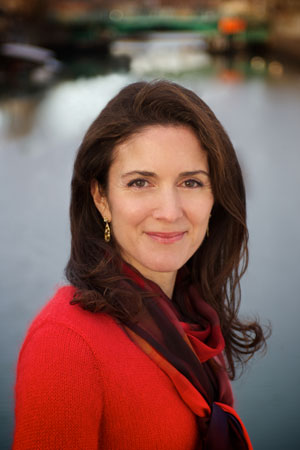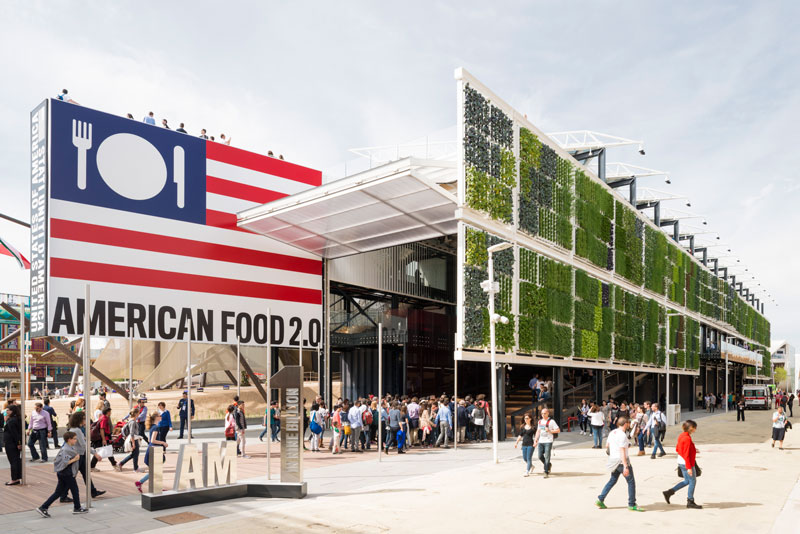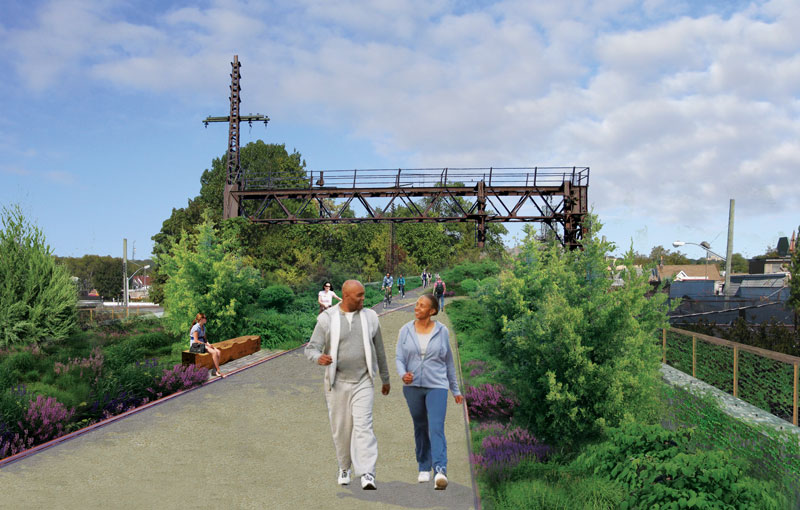Alumni Q+A: Susannah C. Drake MArch ’95, MLA ’95
 Making urban environments more resilient is a charge taken on with urgency for many city leaders, the United Nations, and recently the Rockefeller Foundation with its 100 Resilient Cities initiative. For over a decade, Susannah C. Drake MArch ’95, MLA ’95, has tackled challenges of resiliency and ecologically productivity with her firm DLANDstudio, an award-winning multidisciplinary design firm.
Making urban environments more resilient is a charge taken on with urgency for many city leaders, the United Nations, and recently the Rockefeller Foundation with its 100 Resilient Cities initiative. For over a decade, Susannah C. Drake MArch ’95, MLA ’95, has tackled challenges of resiliency and ecologically productivity with her firm DLANDstudio, an award-winning multidisciplinary design firm.
Recently, DLANDstudio initiated and designed a new kind of public open space, a Sponge Park™, at the Gowanus Canal in Brooklyn, an EPA-designated Superfund site. This working landscape is designed to absorb and remediate urban storm water while improving the environment of the canal over time. Other recent projects include USA Pavilion at the EXPO Milano 2015. DLANDstudio worked as the lead landscape architect to develop and design a 350-foot operational vertical farm wall showcasing the United States’ innovation in the food sector, and other aspects of culture, science, and business. Other projects include the Brooklyn Bridge Pop-up Park, BQ GREEN in Williamsburg, HOLD modular stormwater management system in Flushing Queens, and the security for the New York City Police Department in lower Manhattan.
Drake is the recipient of grants from the Graham Foundation, New England Interstate Water Pollution Control Commission, the James Marston Fitch Foundation, the National Oceanic and Atmospheric Association, the American Institute of Architects (AIA), and the New York State Council on the Arts for work on campus landscapes and large scale urban infrastructure projects. She is a member of the AIA New York Chapter, the former President and Trustee of The New York American Society of Landscape Architects, and a Trustee of the Van Alen Institute.
Tell us about your background. When did you realize you would be designer/architect?
I was born in Cambridge, England. My father, who was a geophysicist, was on sabbatical from Columbia Univeristy and took the family to Kings College for the year. Aside from having the UK passport, I can’t say I’m English. When I was three, my family moved from New York to Norwich, Vermont for my father to become Chair of the Geology Department at Dartmouth College. My formative years were spent in the verdant fields and forests of the Upper Connecticut River Valley. Growing up, I was surrounded by so many brilliant people who taught me about the environment. Robert Jastrow visited to watch the Aurora Borealis and taught me about sunspot activity, and I walked through the woods with botanist Loren Potter while he discussed why the forest looked the way it did, while pointing out special trees and wildflowers. As the youngest of four girls by about eight years, I also spent a lot of time exploring on my own. Perhaps because of the freedom my parents gave me, I decided to stay in the area and attend Dartmouth College where I studied Art History and Fine Arts. However, my most meaningful class was offered by the Engineering Department, which opened my eyes to how I could positively impact the physical environment through design.
When did you realize you wanted to go into landscape architecture?
After Dartmouth, I worked for architect Mark Mitchell, who had studied under Josep Lluís Sert at the GSD. I didn’t know what Landscape Architecture was until an issue of Progressive Architecture dedicated to Landscape arrived at the office. When I dug a little deeper, I learned that one of the most influential landscape architects of the 20th Century, Dan Kiley, lived in Charlotte, Vermont and that a high school field hockey teammate worked for him, so I arranged a visit. That visit confirmed my intention not only to study Landscape Architecture but also, on Kiley’s advice, to pursue a degree in Architecture.
Why did you choose the GSD?
I wanted the school with both the best Architecture and Landscape Architecture programs in the country. There are other schools that are strong in one field or the other, but the GSD was and is strongest in both.
Tell us about your professional career. You’ve worked at firms across the country. In 2005, you founded DLANDstudio, with the goal to create beautifully designed, ecologically intelligent, and well-executed projects that work well at the large scale and are executed in rigorous detail. What motivated you to start your own business?
I always wanted to have my own business and started DLANDstudio because I felt there was a need for a truly integrated design vision that could operate not only across physical scales but also across the fourth dimension of time. I am both a registered architect and registered landscape architect. My choice of the GSD was integral to this vision.
What’s your favorite memory of the GSD?
I collaborated on a project with students Scheri Fultineer MLA ’96, MTS ’96 and Hope Hasbrouck MLA ’96 for Carl Steinitz’s Theories and Methods class. We studied divination practices and created an interface between Mac GIS platform and Ouija spirits to map proposed housing sites in Petersham, Massachusetts. Our method resulted in the best sites; all on south facing sites that related to Native American ley lines and were within a two-mile walk to town. Sheri is a professor at RISD, and Hope is a professor at UT Austin.
What is the most significant thing you learned while at the GSD?
I learned to be a leader.
Was there anyone at the GSD that had great influence on you?
There were many people who influenced me, from Beth Meyer to Richard T.T. Forman, but I would say the greatest influence came from Mohsen Mostafavi. Mohsen, as program director of the Architecture degree program, gave me the support I needed to stay the course and finish both MArch and MLA degrees.
Have there been any significant life experiences that influence your work?
When I was 14, I went on the ROX stretch, the Dartmouth College Geology Department field trip to Utah with my dad Charles Drake and his students. The students measured the impact of impoundment of massive amounts of water in Lake Powell. They did seismic tests, took core samples, and made great maps. We lived on houseboats and explored the canyons of the Escalante River. I remember bringing a bright yellow rock back to the boat from one of my hikes that turned out to be uranium and highly radioactive. Maybe that explains why I’m constantly pursuing Sisyphean tasks.
Who or what inspires you and your work?
I’m inspired by the world around me, both natural and built. The intersection is fascinating. It has taken many years of study, but I now find that I can read the urban and natural landscape with enough knowledge to be able to mine opportunity. Sometimes ideas evolve out of recognition of systems that are not working as well as they should. My process is research-based, and the exploration of history, politics, culture, geology, ecology, and tectonics invariably leads to innovations.
DLANDstudio initiated and designed a new kind of public open space—a Sponge Park™. The Gowanus Canal Sponge Park™, on one of the most polluted bodies of water in the United States, opened in 2015. How did you get involved in this project? What challenges did you encounter?
Working with local community groups, we invented the project and then evolved the design enough that it is being considered as a new standard form of green infrastructure by the NYCDEP and NYCDOT. I’m currently  writing a book about the challenges. It’s very challenging to innovate on a site where a normal project requires over 200 permits from dozens of agencies. Gowanus is also a designated New York State Department of Environmental Protection Brownfield and an EPA Superfund site. The project suggests a new paradigm for practice with grant funding catalyzing not only initial planning but also design and contract document production, construction, monitoring, and even long-term maintenance.
writing a book about the challenges. It’s very challenging to innovate on a site where a normal project requires over 200 permits from dozens of agencies. Gowanus is also a designated New York State Department of Environmental Protection Brownfield and an EPA Superfund site. The project suggests a new paradigm for practice with grant funding catalyzing not only initial planning but also design and contract document production, construction, monitoring, and even long-term maintenance.
For the USA Pavilion EXPO Milano 2015, DLANDstudio developed a 350-foot operational vertical farm wall. Tell us about the process to design this wall.
We worked with an agronomist named Nate Storey of Bright Agrotech, who operates out of a lab at the University of Wyoming. When I visited a nursery with him just outside of Denver, I knew I had the right partner to develop the wall. His zip towers integrated elegantly into the gridded farm that was intended to suggest not only historical agrarian patterns evolving out of Jefferson’s Land Ordinance Act but also new ideas about microclimate, use of heritage seeds, and companion planting.
Tell us about your work/life balance? What occupies you when you are not working?
When I was a teenager my father suggested to me that I should find something I love doing and then figure out how to support myself in pursuit of that passion. Life and work are all very fluid for me and always have been. I would say I’m always working because my life influences everything I do. When I read the New York Times, I consider how issues are affecting the city and environments around the world.
I have three kids. Aside from the physical issues of being pregnant, giving birth, nursing and then having to care for another individual on their schedule- not mine – I experienced discrimination from one of my early employers. It was subtle but very real and hurtful. This may have influenced my decision to create my own practice where I have flexibility, a policy I share with my employees.
I’m very active and love to run, skate, ski, hike, play squash, and do yoga, among other activities. One of my favorite activities is exploring new places—both urban and rural—on foot. Walking in the city and hiking in the country is an ongoing passion.
Can you share about projects you have upcoming or that are in progress?
We are about to start two very exciting projects. One is an extension of our work in Gowanus, building new public open space along the water’s edge that holds and cleans surface water runoff. The project may also include implementing more street-end sponge parks.
DLANDstudio is also about to begin design of the first section of the Queensway. Queensway is a 3.5-mile former rail corridor that runs from Forest Hills to Ozone Park with sections on grade, in a ravine, and on an elevated structure. The project, which is sponsored by the Trust for Public Land, adds 40 acres of new park space to the city. It is a truly public open space for real New Yorkers.
What advice do you have for GSD students and alumni?
Similar to what my father suggested to me, I would counsel to find some aspect of design that you are truly passionate about and then to pursue it in ways that are integral to your life. The GSD platform is very strong and can enable access to a phenomenal range of resources. It is up to us to take full advantage of the privilege we have earned.
What’s your greatest professional achievement?
We have received a lot of recognition for our work on climate resilience, and some of the work is in the permanent collection of the Museum of Modern Art. But I would say perhaps more meaningful is that we have created new types of standard green infrastructure in one of the most complex, highly regulated, political, expensive, polluted urban landscapes in the world.
What would surprise us about you?
I am a pretty good figure skater and in fact used to be a coach when I was in college. I can do many types of spins, jumps, and footwork. It’s kind of like drawing and requires an architect’s precision and attention to detail.


